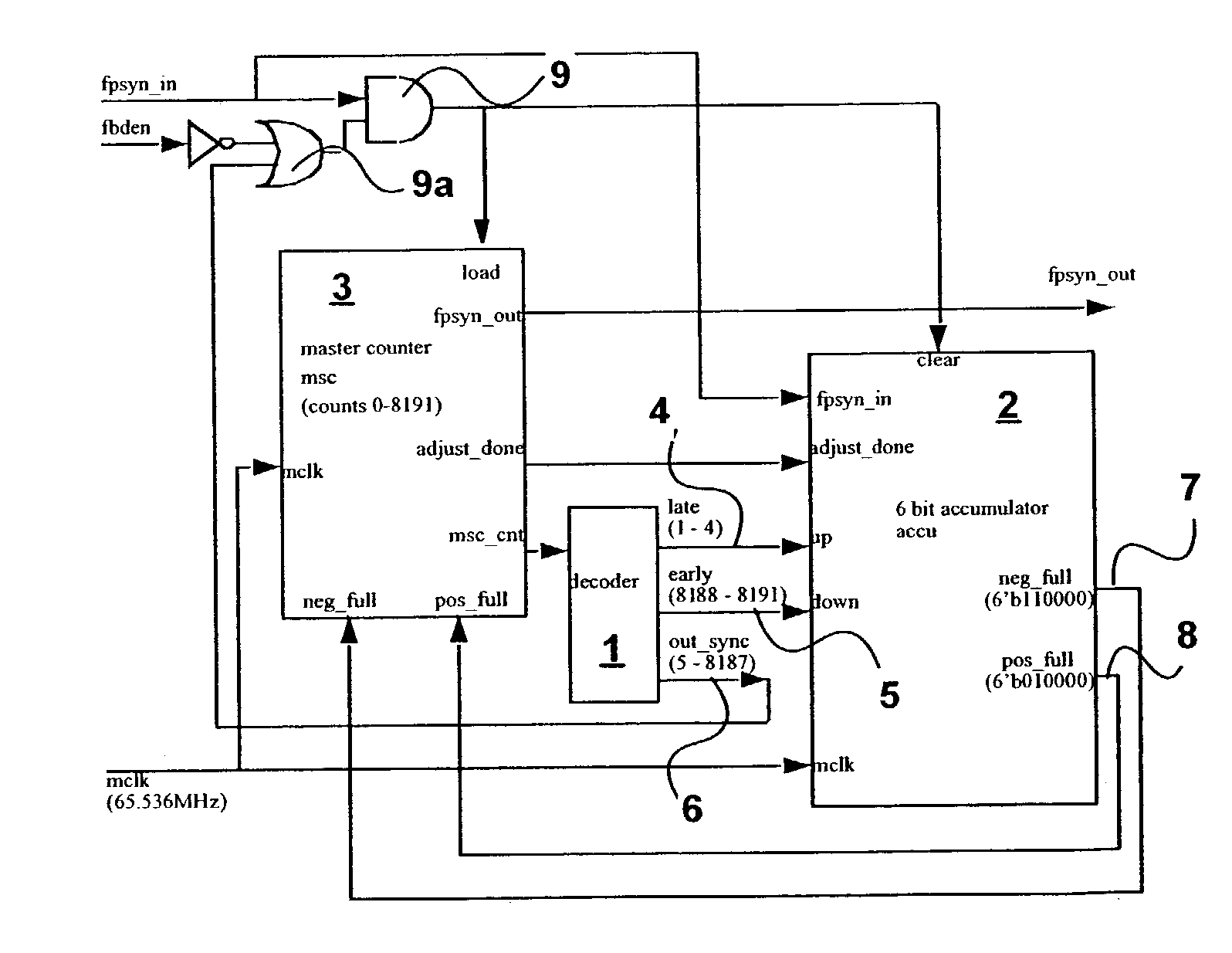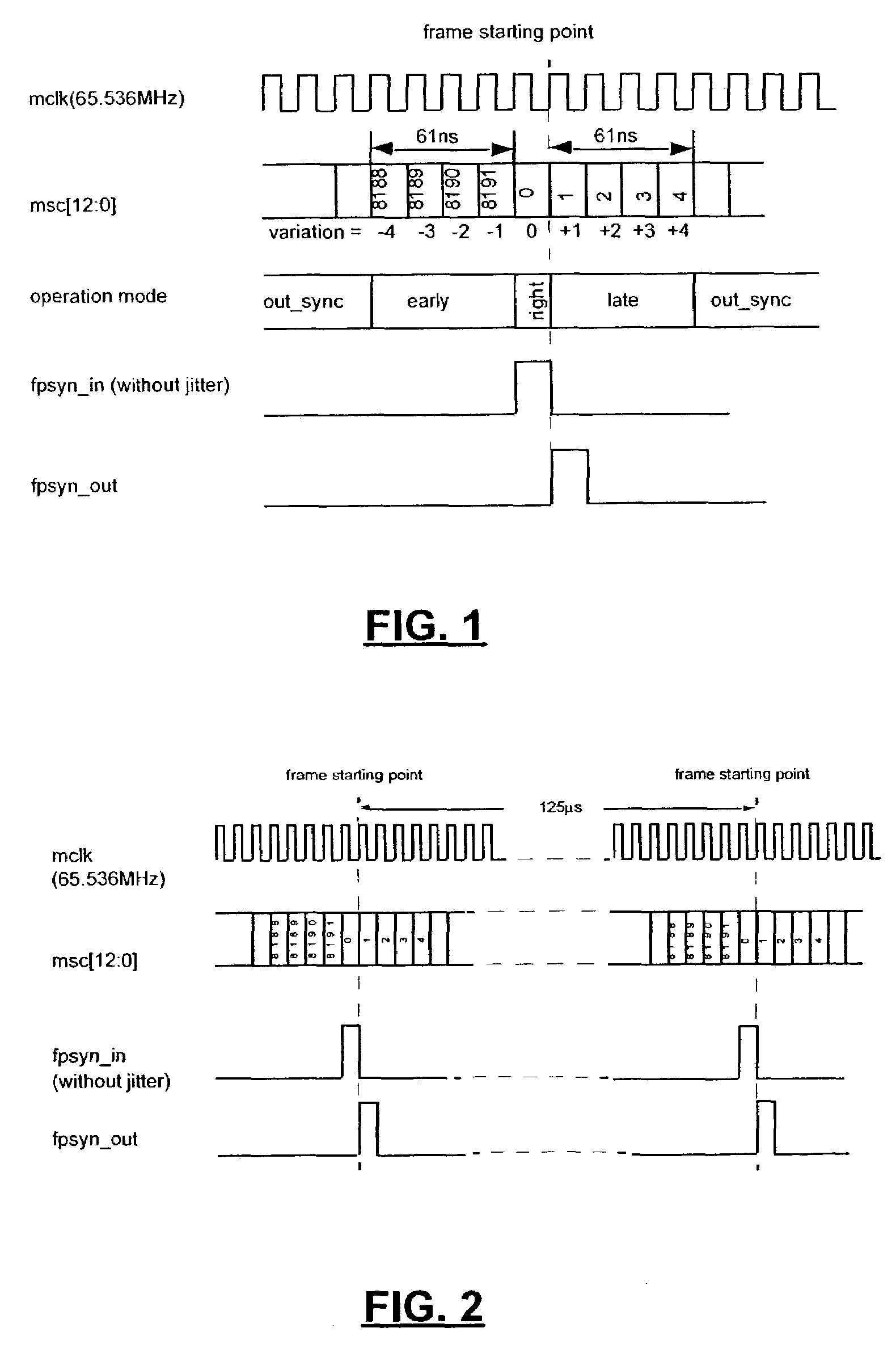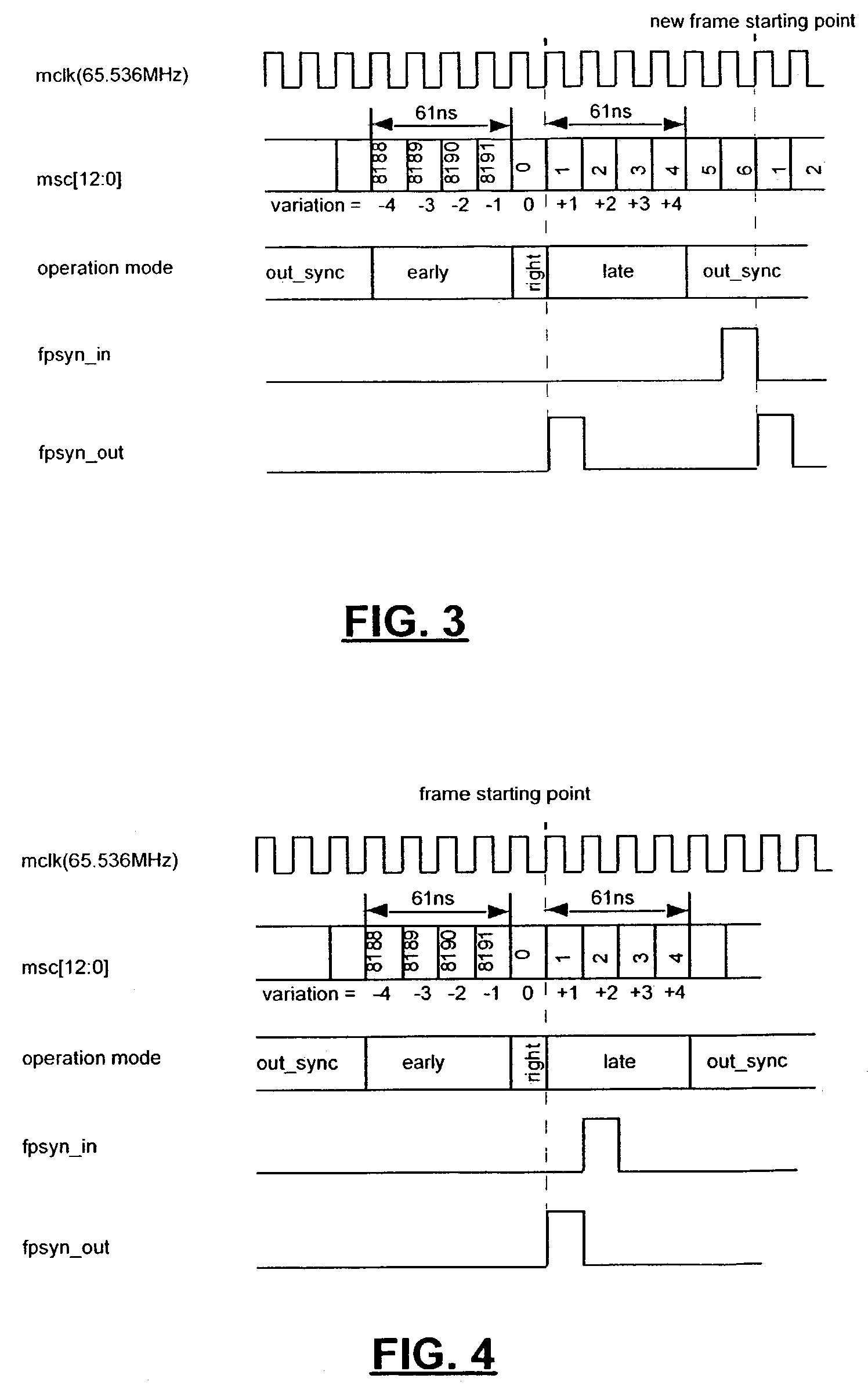Frame boundary discriminator
a boundary discriminator and frame signal technology, applied in the field of telephony digital signal transmission, can solve the problems of increasing the sensitivity of the system to clock skew, the limited capacity of related state machines to process signals in such a system, so as to achieve smooth out jitter and high tolerance of jitter
- Summary
- Abstract
- Description
- Claims
- Application Information
AI Technical Summary
Benefits of technology
Problems solved by technology
Method used
Image
Examples
Embodiment Construction
[0021]The described circuit in accordance with the invention generates an internal frame pulse which is stable even with a jittered input reference clock and input frame pulse. A higher speed master clock and a synchronized input frame pulse are required by this circuit. These are used as primary input signals.
[0022]Referring first to FIG. 6, the boundary discriminator circuit comprises three major blocks, namely a decoder 1, an accumulator 2 (accu), and a master counter 3 (msc). The counter 3 is a modulo 8191 counter that can have a count value anywhere between 0 and 8191.
[0023]Decoder 1 decodes the count value of counter 3 and generates a late signal 4 when an input frame pulse arrives and the count value is 1-4, an early signal 5 when the count value is 8188-8191, and an out_of_sync signal 6, when the count value is from 5-8187. Signals 4 and 5 are input to the accumulator 2, which generates enables signals neg_full 7 and pos_full 8 in a manner to be described. Signal 6 is passed...
PUM
 Login to View More
Login to View More Abstract
Description
Claims
Application Information
 Login to View More
Login to View More - R&D
- Intellectual Property
- Life Sciences
- Materials
- Tech Scout
- Unparalleled Data Quality
- Higher Quality Content
- 60% Fewer Hallucinations
Browse by: Latest US Patents, China's latest patents, Technical Efficacy Thesaurus, Application Domain, Technology Topic, Popular Technical Reports.
© 2025 PatSnap. All rights reserved.Legal|Privacy policy|Modern Slavery Act Transparency Statement|Sitemap|About US| Contact US: help@patsnap.com



